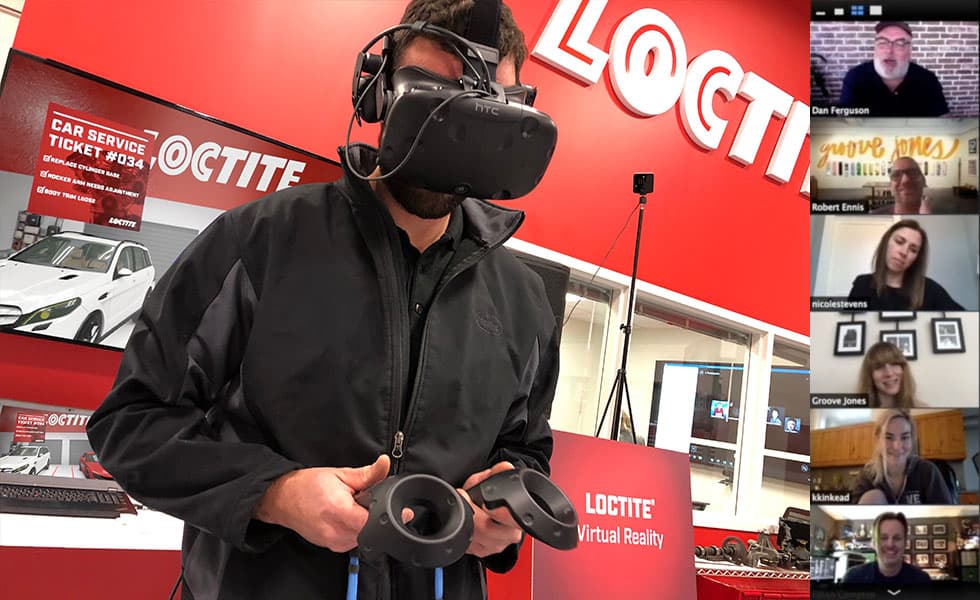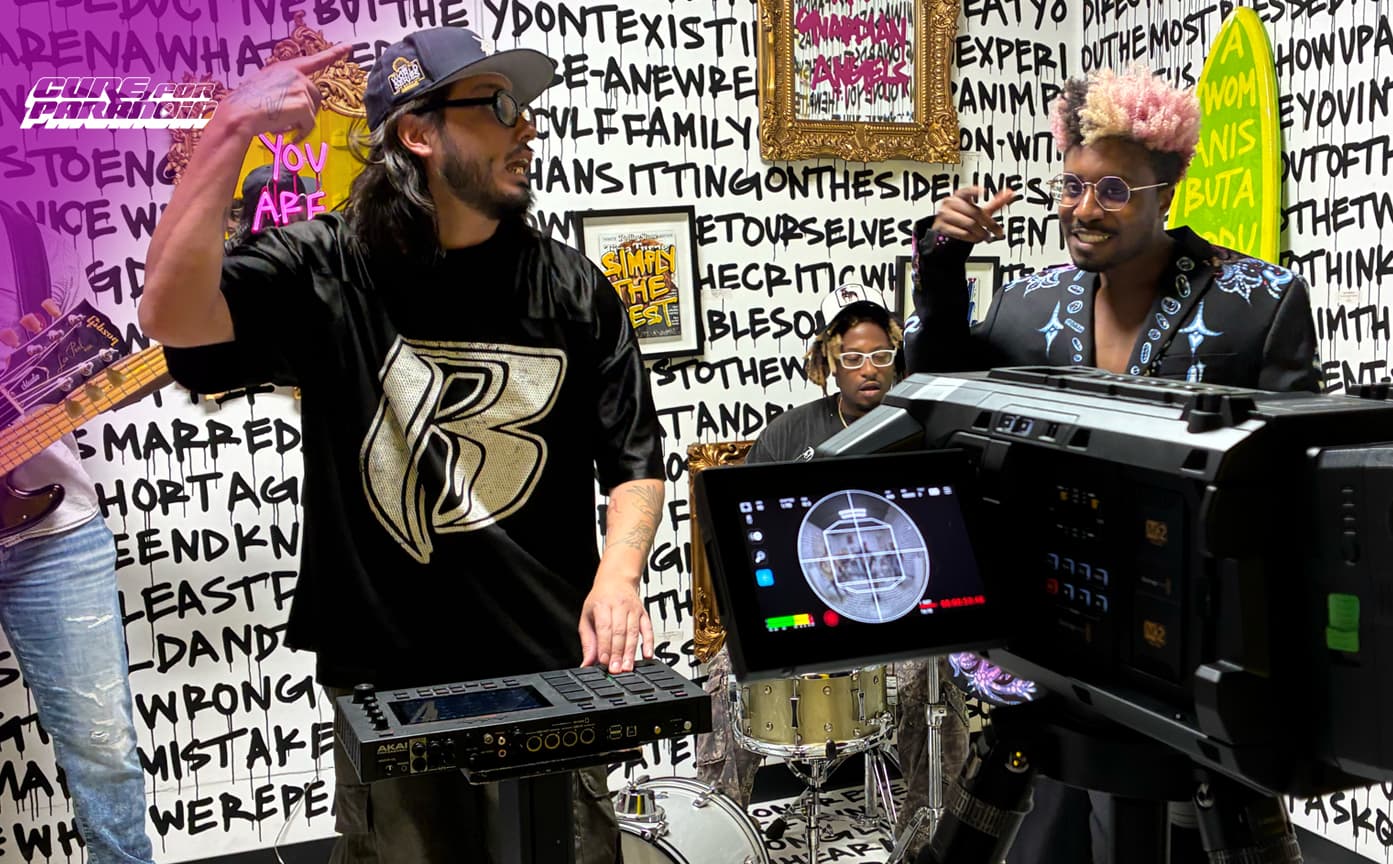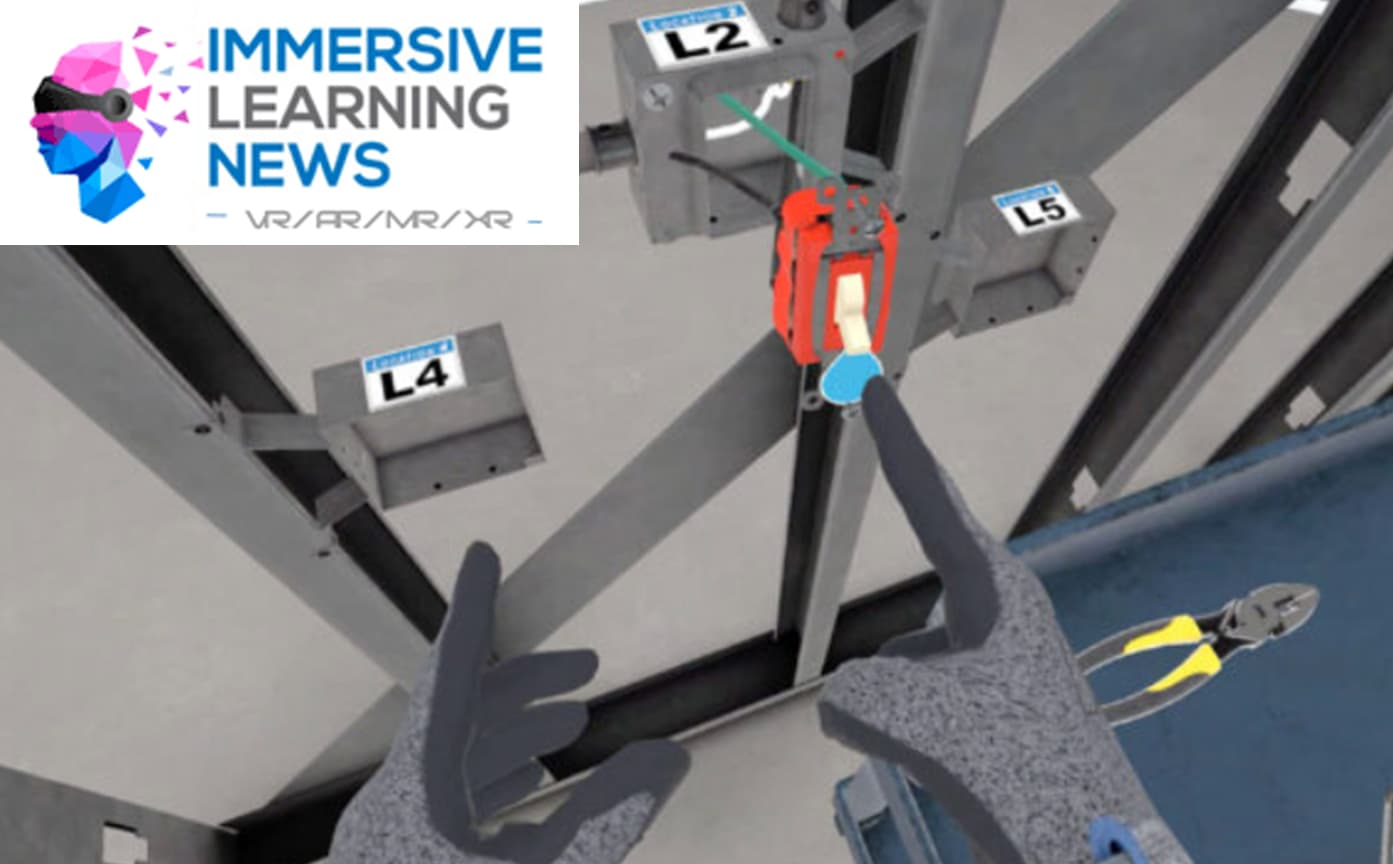VR Training with a Remote Workforce
Plato, the Greek philosopher, said, “Necessity is the mother of invention.” A need or problem encourages creative efforts to meet the need or to solve the problem. This is so true today. There is some really great innovation going on in our world due to COVID-19. Which has inspired us to evolve some new methods for VR training.
In this example, we’ve integrated Zoom video conference calling into a VR training SIM we had created for our client Henkel Loctite. (Any video conference calling system like – Skype, WebEx, or Uber Conference will work.)
This is a VR training simulation that allows their clients and employees to learn about Loctite products in a controlled and safe environment. The current training tool is a single user experience and is installed at Loctite training facilities. Case study about the enterprise training tool is here – https://www.groovejones.com/automotive_vr_training/

In the training simulator, a person must complete a series of work orders to accomplish the task. By integrating video conference technology, we can allow multiple people to experience the VR tool and interact in a leader-led training session.

How Can We Train When We Are All Working Remotely?

What to Expect
Multiuse – Post COVID-19
We know investing in VR is different and you will be asked is this a short term solution. The answer is no. We are adding value to the idea of using VR. For those that can experience it on-site at an event, it is a compelling experience. When our customers and workforce return, they will be able to have a premium experience, in a headset. By adding the ability to increase the number of viewers, we changing the game. We are also making the tool more valuable, as the host can present anyway. They don’t need ot be anchored to an event or innovation center at the HQ.
Multiple People in a Shared Space
Video conferencing platforms allow us to scale this, and we can leverage the same tools that are available on a desktop. Multiple people can view, communicate, and observe a presenter or a leader-led demonstration at the same time. The presenter can see and communicate with everyone as well. Standard conference calls can have up to 100 people. This works for both desktop and mobile versions of the calls.
Collaborating with other VR Users
Yes, we can have multiple people in VR, in a shared meeting with video conference users. This is a unique opportunity to have more than one person in the presentation space. If you have an audience that has specific VR headsets, we can make it so they can be in the VR world experience with the presenter. This can be done at the same physical location or via a networked remote multiuser lobby system.
Demonstration and Presenter Tools
The presenter can have a wide array of tools – whiteboard, screen share, media playing capabilities, as well as the ability to show off room-scale or 3d digital objects. For the Henkel Loctite demonstration, the instructor walks through the various repairs, asks the participants about the individual products and use, and even asks them to make the decisions within the space. Scores are reflected at the end of the demonstration.
Like any other VR experience, we can bring the participants into the VR world. Within that VR world, we can simulate anything. The presenter can then control what and how the audience views the space and the objects.
Does it Only Work With Zoom?
So far, we can have this setup work with any web-based or desktop-based teleconferencing system. So that means Zoom, Uber Conference, Skype, and GoTo Meeting will all work.

Collaborative Tools
Most teleconference systems have limited native collaborative tools built into it. We can allow audience members to share their screen with the entire group on both desktop and mobile. With annotation, you can use arrows, lines, pen, highlighter, eraser to collaborate on a shared screen.
What’s Next?
This is a toolset that is quickly evolving, and we are excited to see what our clients come up with. If you saw what our client, the St. Louis Aquarium, did with the Otter Chat attraction we created, you will see how people are innovating. Connecting interactive XR (Extended Reality) experiences to traditional digital platforms seems to be catching on.

Like what you see? Reach out and let’s discuss how we can create a customized experience for you. Feel free to reach out at any time – Contact Us or email us at whois@groovejones.com.




